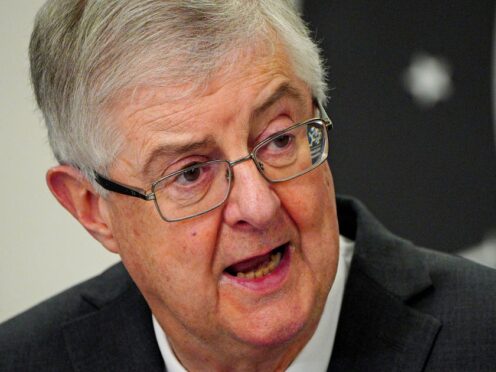
The First Minister of Wales has told the UK Covid-19 Inquiry that he “absolutely regrets everything that led to loss of life” during the pandemic.
Mark Drakeford made the comment when giving evidence to the inquiry, which is currently sitting in Cardiff, during questioning over the Welsh Government’s policies concerning care homes.
He was questioned whether the risk of spreading Covid-19 from hospitals to care homes, containing some of the most vulnerable people, was properly managed by the Welsh Government in the early part of the pandemic.

Mr Drakeford said that discharging vulnerable patients from hospital was considered “the safest thing that we could do” at the time, and referenced evidence by England’s chief medical officer Sir Chris Whitty on the issue.
He told the inquiry: “He makes the point that the risks to very vulnerable people staying in hospital when they are medically fit to be discharged, at a point when hospitals are about to become the epicentre of the most dangerous place you could be, then that was not a course of action that had merit.
“You are discharging people back to their homes, some people live in care homes but it is their home and they are fit to be discharged there, and there are protections that can be put in place to try to manage the impact of the disease when they get there.
“That was the line of reasoning that we were following at the time, that the safest thing that we could do was to remove people who didn’t need to be in hospital out of hospital given the impact that the disease was about to have on those hospital services.
“And that when people went home, there were precautions that could be taken to try to manage the risks that they would face there.”
The inquiry heard that on April 29 2020, the Welsh Government policy changed so that all patients should be tested for Covid-19 before being discharged from hospital to care homes.
Mr Drakeford said if that decision had been taken earlier, it would have meant tests were not available for other purposes.
“There weren’t enough tests to do all that we would have liked with them,” Mr Drakeford said.
The hearing was told the UK Government announced mass testing of asymptomatic residents and staff across care homes in England on April 28.
Two days later, a group of MPs wrote to Mr Drakeford to express concern that he had not done so.
When asked about his response to that letter, Mr Drakeford said: “I think this is terribly difficult territory because I know just how powerfully people feel about what happened in care homes here in Wales.
“I absolutely regret everything that led to loss of life. My own mother lived in a care home in Wales throughout this pandemic.
“These are matters that in a Welsh context, the decision-makers are not immune from the decision that we take.”
Mr Drakeford acknowledged that there were instances of Covid-19 being “seeded” into care homes by people being discharged from hospital.
However, he said the primary reason for the virus entering care homes was through people going into them to care for those living there.
He added: “As coronavirus rises in the community, the risk that it will be carried into care homes in that way increases and I know for a lot of people that’s an uncomfortable conclusion but I think it is where the evidence that I have seen takes us.”
Referencing the letter, Mr Drakeford said he had to “rely upon the orderly decision making process” that Welsh Government had rather than being “buffeted” by letters.

Enjoy the convenience of having The Sunday Post delivered as a digital ePaper straight to your smartphone, tablet or computer.
Subscribe for only £5.49 a month and enjoy all the benefits of the printed paper as a digital replica.
Subscribe